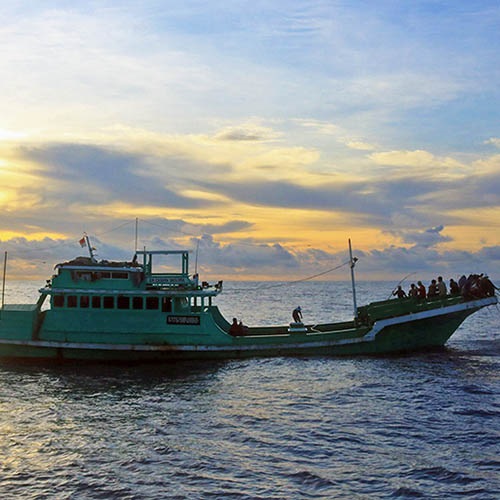We want MSC certification to protect habitats around the globe, and the impact a fishery has on habitats is always considered in an MSC assessment.
A fishery cannot be certified if it causes serious or irreversible harm to the structure and function of a seafloor habitat. Principle 2 of the MSC Fisheries Standard defines serious or irreversible harm for the different MSC habitat scoring classifications.
How has our Standard changed?
The new version of our Standard includes clarified requirements and guidance to ensure that the impacts of fisheries on habitats are assessed more accurately and more consistently.
Classification of habitats
We have clarified and redefined the way we classify habitat status under Principle 2 of our Standard.
Habitats will be classified as 'More Sensitive' or 'Less Sensitive', based on the time it takes to recover from the impacts of fishing.
- More sensitive habitat: a habitat unable to recover to at least 80% of its unimpacted structure and function within 20 years if fishing were to cease entirely.
- Less sensitive habitat: a habitat able to recover to at least 80% of its unimpacted structure and function within 20 years if fishing were to cease entirely.
The terms 'More Sensitive' and 'Less Sensitive' will replace 'Vulnerable Marine Ecosystem' (VME) and 'Commonly encountered habitats', respectively. Habitats will now only be known as VMEs if they have specifically been designated as a VME according to the UN FAO criteria.
To further clarify and streamline our Standard, we have removed the 'Minor habitats' category from the habitat performance indicators. This will remove ambiguity and ensure assessors are explicitly classifying a habitat as either more or less sensitive.
‘Move on’ rules no longer a minimum requirement
‘Move on’ rules will no longer be a minimum requirement (SG60) for fisheries interacting with More Sensitive habitats (previously known as VMEs). ‘Move-on’ rules are precautionary tools which require fishing vessels to move away from an area if sensitive habitats or species are encountered. However, ‘move-on’ rules are not relevant to all fisheries, and in some cases, alternative and potentially more effective, precautionary management approaches exist.
Fisheries will still have to demonstrate they have an appropriate and precautionary management system or measures in place that set out how they will manage and mitigate impacts on sensitive habitats if encountered.
New tool for measuring impacts on the seabed
We have developed a new tool - MSC Benthic Impacts Tool - to assess the impact of bottom trawling gear on seabed habitats and how long they take to recover.
The tool will provide indicative scores for the habitat performance indicators and help improve consistency and objectivity in assessments.
The tool was developed in collaboration with Bangor University and can also be used by fisheries to better understand their impacts on the seabed and to support better management and mitigation measures.
The MSC Benthic Impacts Tool will sit in the new Fisheries Toolbox, alongside requirements for how and when it can be used. This will ensure fisheries are only applying the tool when appropriate and that the outcomes can be consistently audited by assessors.
Fisheries Standard 3.0 implementation
Developing our policies
In 2022, we published Version 3.0 of the MSC Fisheries Standard following the most comprehensive review to date.
The development of the Standard follows public consultation on key aspects of the review, including a 60-day public review of the draft Standard and all associated documents.
We also commissioned independent research and carried out data analysis and impact assessments to determine whether proposals are feasible and deliver our stated intentions. We also sought advice and input from our governance bodies throughout the process. Find out more about how we develop our standards.
Follow the links below to find out more about the different inputs which contributed to the clarification of our requirements on assessing fishery impacts on habitats:
- MSC Fisheries Standard Review - Impact Assessment Report - Habitats (Oct 2021)
- Vulnerable Marine Ecosystems and Fishery Move-on Rules: Best Practice Review, ABPmer and Ichthys Marine (SF Walmsley, KE Pack, CA Roberts, R Blyth-Skyrme), (June 2021)
- Consultation summary report – Proposed revised MSC Fisheries Standard (May 2022)
- Consultation summary report – Clarifying the MSC’s Habitats requirements – October 2020

MSC Fisheries Standard version 3.0
An overview of the changes made to our Standard.

Fisheries Program Documents
The MSC Fisheries Standard and General Certification Requirements.

.tmb-labelhome.jpg?Status=Master&Culture=en&sfvrsn=39466bd9_3)